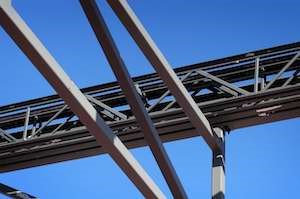OCA issues open message to industry
The Ottawa Construction Association recently hosted a roundtable discussion of 40 regional contractors and suppliers to discuss the challenges of material supply and price escalation.
 During the session, participants discussed a number of issues surrounding these challenges (see below). Coming out of the discussion was an open message to everyone in the industry, and particularly to construction buyers and designers.
During the session, participants discussed a number of issues surrounding these challenges (see below). Coming out of the discussion was an open message to everyone in the industry, and particularly to construction buyers and designers.
Some significant key messages follow:
Ensure your project budget and expectations are aligned with current reality before tendering.
The cancellation last week of the $100-million Ottawa Police Services South Facility is a case in point. The market is so turbulent presently that unfortunately OPS may have missed an opportunity to lock in pricing. The challenge now is to complete a significant redesign to capture potential savings while material prices escalate. Now more than ever, buyers and design consultants need to work up-front with builders on budgets to reflect current market prices.
Do not seek a 60- to 90-day bid validity period to approve a project.
The shorter the bid approval timeline, the better. In the current climate, anything longer than 30 days is unworkable. Many suppliers and subcontractors are offering terms of seven or 14 days on their pricing.
Consider a material payment adjustment clause in your project tender to deal with price fluctuations.
There are precedents out there to deal with certain product price volatility in the past. The City of Ottawa and the Ministry of Transportation, for example, include clauses for fuel or asphalt cement volatility. Contractors are given a credit should the price index rise by more than 15 percent from the month when the contract was signed. Buyers likewise receive a credit should the price index drop by more than 15 percent.
Plan your project with all parties in the subcontractor and supply chain as early as possible. Order in advance, pay for materials when they arrive.
Communicate early and regularly.
Stay calm and let's work together. There is a light at the end of the tunnel.
Heard and discussed on the OCA roundtable call
Feedback from industry stakeholders about the current market situation was sweeping. Supply shortages—along with frequent price increases—are happening across all aspects of building and infrastructure construction, and suppliers typically will not guarantee their prices now past 14 or even seven days.
Here are some of the reasons for the supply-delivery and price-volatility challenges discussed by OCA members during the discussion.
There is a global logistics challenge with shipping containers. Port congestion is delaying the unloading and delivery of materials, which means that many containers are sitting idle as they are quarantined and disinfected before being reloaded and shipped.
In addition, infrastructure stimulus programs being delivered by governments in Asia are driving heightened demand for construction materials. Materials that are normally manufactured in those regions for export are being kept for domestic supply.
Closer to home, the February winter storm in Texas has crippled one of the world’s leading petrochemical manufacturing supply bases—particularly as it pertains to supply to the automotive and construction industries. Emergency shut-downs and damage from burst pipes crippled equipment and caused several plants to be rebuilt from scratch. Supplies of many products—including PVC, additives and firestopping—have been affected to date, and paint shortages are expected soon.
The North American market for drywall is sold out. Suppliers are on allocation. There have been three or four instances in Eastern Canada where the distribution network had no inventory of 5/8" drywall to sell to suppliers.
Lumber is very limited. Suppliers are buying blind to prices. When supply arrives—usually in six to 12 weeks—the product cost is the price on delivery. Plywood costs have doubled to $100 per sheet. OSB 7/16" is now more expensive than plywood.
Finally, the steel industry continues to reel from the emergence of the pandemic last spring. At the time, the industry closed numerous plants or reduced capacity in others. Capacity is slowly increasing in North America, but supply remains a challenge. Even major purchasers that used to be able to buy steel six months in advance are being limited to 30 days or fewer.
Steel pricing has doubled from $600 to $700 per metric tonne in November 2020 to as much as $1,400 per metric tonne today. Where prices use to be guaranteed for two or three months, that period has been shortened to 15 days, with mills saying that the market won’t return to stability until the first or second quarter of 2022.
Demand for steel is significantly concentrated in the industrial sector. Construction of large distribution centres for retailers such as Amazon and Kmart—estimated at a combined value of $100 billion—are forecasted to consume a staggering 65 percent of the steel produced in North America in the next 24 months.








